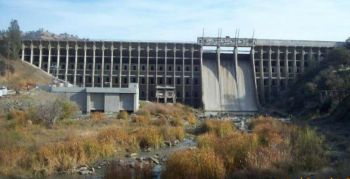Pre-Analysis Communication Best Practices

|
| All successful projects are based on clear communication and thought-out plans. |
Purpose
This presents a framework for an engineer/modeler to communicate the process of hydrologic, hydraulic, seepage, and stability models to both a dam owner and regulatory agency. There are a variety of approaches and methodologies for these modeling efforts, and it is important to owners, consultants, and regulators that clear communication is integrated in the process. The purpose of this page is to guide communication among all interested parties prior to commencing a modeling effort.
Levels of Pre-Analysis Communication
The complexity and degree of pre-analysis communication will vary from project to project and exists on a spectrum as illustrated below. For simple modeling efforts, email correspondence or a brief proposal may be an adequate level of pre-analysis communication. For more complex or impactful efforts, all of these methods of communication may be needed to adequately plan the modeling effort. The following factors may influence the level of pre analysis communication on the spectrum:
- Hazard classification or potential downstream consequences of the dam to be modeled
- Modeling purpose (i.e., screening level study, rehabilitation design, risk assessment, hazard reclassification, emergency planning)
- Public interest or involvement in the project
- Technical complexity of the analysis
- Unknowns and data gaps in the analysis and potential for dam safety risks during data acquisition (e.g., bore holes through an embankment dam)
- Level of previous experience with the dam, owner, and/or regulator
- Importance of model in directing critical design decisions
- Level of experience / validation of the analysis method in standard practice

|
Steps of Pre-Analysis Communication
- Develop Project Understanding and Objectives
- Develop Scope of Work
- Obtain Concurrence from Regulatory Agency
- Proceed with Modeling and Keep Communication Channels Open
Developing a Pre-Analysis Submittal
The pre-analysis submittal should address an understanding of the model objectives, project constraints, and overall approach should be developed. In order to develop this project understanding, the dam owner and engineer/modeler should meet to discuss the modeling approach, including items that can substantially impact cost and/or schedule. Commonly, the regulator is not involved in early scope of work discussions that have financial or contractual components.
General Considerations for All Models
- Describe the model purpose and justification of need.
- Summarize the overall assumptions and modeling approach.
- Note the guidance documents used as basis for approach (e.g., State published guidance, USBR Design Standards, FERC Engineering Guidelines for Evaluation of Hydropower Projects, USACE Engineering Manuals, etc.)
- Summarize the possible outcomes and expected outcomes.
- Summarize the data that is available or will be collected as part of the process.
- Provide an assessment of which assumptions are foundational (i.e., modifying assumptions would require additional communication and concurrence) and which can be modified through the analysis process.
- If an Independent Review is planned, describe the relationships and responsibilities of the parties involved (third party, internal to modeling firm or expectations for regulatory agency review)
- Note factors that may increase the modeling level of effort. This is also a discussion item with the dam owner during scope of work negotiations.
- Describe how interim and final modeling results will be presented (written report, presentation, discussion, etc.). This is also a discussion item with the dam owner during scope of work negotiations.
- Include a recommended schedule for submittals, review & regulatory feedback. Note critical deadlines to avoid project delays. Request regulatory agency concurrence with schedule as part of feedback on pre-analysis submittal.
Application-Specific Considerations
- Slope Stability Modeling
- Seepage Modeling
- Hydrologic Modeling
- Hydraulic Modeling
- Consequence Estimating
Examples
![]() [ExternalURL Displayed Text]
[ExternalURL Displayed Text]
![]() [ExternalURL Displayed Text]
[ExternalURL Displayed Text]
Best Practices Resources
Other Resources
Trainings
![]() [ExternalURL Displayed Text]
[ExternalURL Displayed Text]
![]() [ExternalURL Displayed Text]
[ExternalURL Displayed Text]
Citations:
Revision ID: 7946
Revision Date: 06/21/2024
